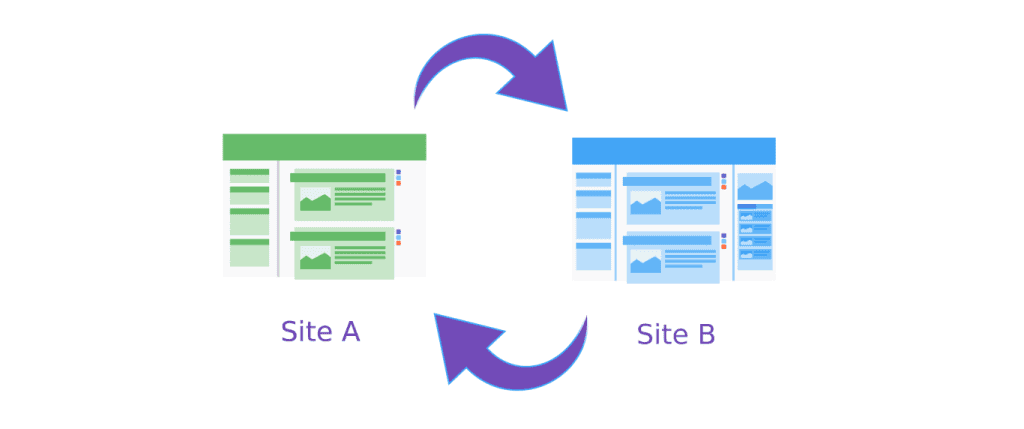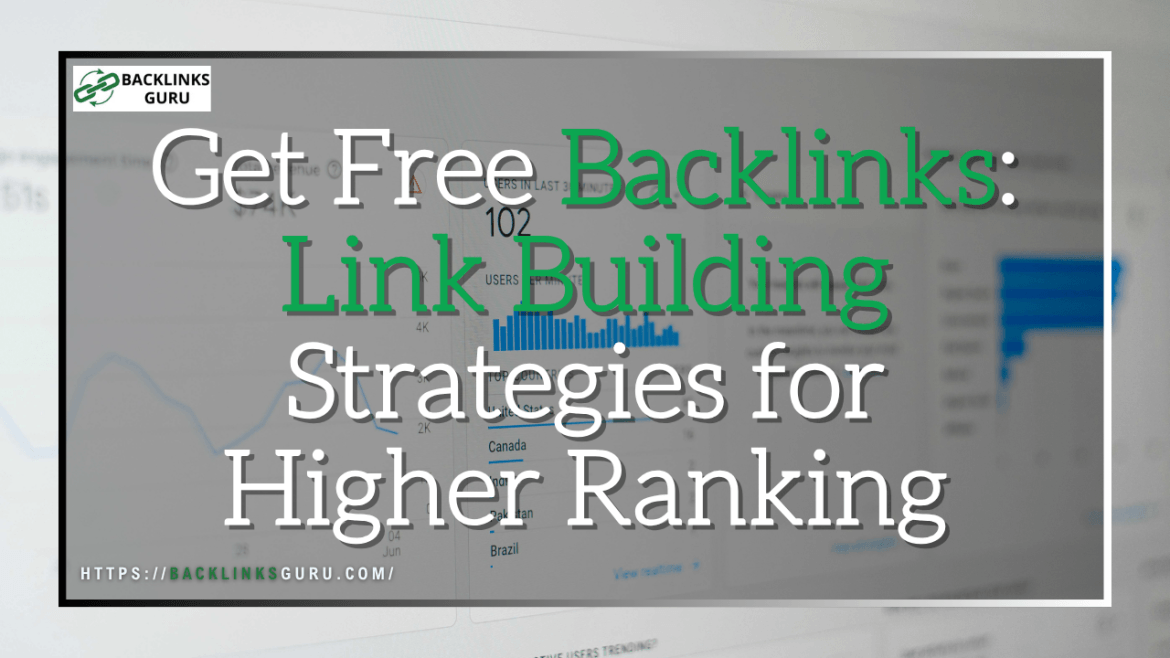Unlock SEO Power: Ethical Tactics to Earn Authority Links Without Spending a Dime
Welcome to the ultimate guide on securing free backlinks and elevating your search engine ranking. In this comprehensive article, we’ll explore various link building strategies to help you build backlinks without spending a fortune. We’ll delve into the essence of what backlinks are, why they are crucial for SEO, and how different types of backlinks can impact your website’s visibility. Whether you’re a seasoned SEO professional or just starting, this guide offers actionable insights to enhance your backlink profile and drive organic traffic to your site.

Understanding Backlinks
What are Backlinks?
Backlinks, also known as inbound links or incoming links, are links from one website to another. Essentially, when another website links to your website, it creates a backlink. Search engines like Google consider backlinks as votes of confidence. The more high-quality backlinks you have, the more credible and authoritative your site appears to search engines. These links act as referrals, signaling that your content is valuable and trustworthy. Understanding the fundamental role of backlinks is the first step in developing an effective SEO strategy. The more backlinks to your website, the better your search engine ranking.
The Importance of Backlinks in SEO
Backlinks are a cornerstone of SEO. They play a significant role in how search engines rank websites. When you build backlinks from reputable sources, you’re essentially telling search engines that your content is worth linking to. This, in turn, boosts your website’s authority and visibility. A strong backlink profile can significantly improve your SEO ranking, driving more organic traffic to your site. Neglecting link building can leave your website buried in search results, making it harder for potential customers to find you. Therefore, prioritizing strategies to get more backlinks is essential for long-term SEO success. The most important aspect of backlinks is making sure you get quality backlinks.
Different Types of Backlinks
Not all backlinks are created equal. The value of a backlink depends on several factors, including the authority of the linking site, the relevance of the content, and the placement of the link. High authority backlinks from well-established websites carry more weight than links from new or low-quality sites. There are also different types of backlinks, such as editorial links (earned through quality content), guest post links, and directory links. Understanding these distinctions is crucial for building a diverse and effective backlink profile. A mix of different types of backlinks can signal to search engines that your website is naturally popular and authoritative. Therefore, focusing on earning a variety of backlinks is a key element of any successful link building strategy. Building free backlinks is not the only thing to keep in mind, but the source of the link is as well.
Here’s the types of backlinks:
1. Dofollow Backlinks
These are the most valuable type of backlink for SEO. A dofollow link passes “link juice” from one website to another, which helps improve search engine rankings.
✅ Example: A tech blog links to your article about SEO tools using a standard hyperlink without
rel="nofollow".
2. Nofollow Backlinks
Nofollow links include a rel="nofollow" attribute, which tells search engines not to pass link equity. These don’t directly impact rankings, but they still drive traffic and diversify your backlink profile.
🔍 Common on forums, blog comments, or press release links.
3. Sponsored Backlinks
Used when a link is paid for or sponsored. These links use the rel="sponsored" tag and are important for complying with Google’s guidelines on paid promotions.
💼 Example: A blogger adds a banner or link as part of a paid collaboration.
4. UGC (User-Generated Content) Backlinks
These links come from user-generated content (forums, comment sections, etc.) and use the rel="ugc" tag. They signal that the link wasn’t editorially placed by the website owner.
🗨️ Often seen on community forums or Q&A sites.
5. Editorial Backlinks
Naturally earned backlinks from high-quality content. These are the most desirable type of backlinks and occur when another website links to your content because it’s genuinely helpful.
🌟 Example: A journalist or blogger references your research in their article.
6. Guest Post Backlinks
Backlinks placed within guest posts written for another site. When done properly and ethically, these links can boost authority and bring targeted traffic.
📝 Typically includes a contextual link within the content or author bio.
7. Niche Edit (Curated) Backlinks
These are backlinks placed within existing articles on established websites. Instead of writing a new guest post, the link is added contextually to aged content.
🔁 These are powerful because the content is already indexed and trusted by search engines.
8. Homepage Backlinks
Links placed on a website’s homepage carry high authority since homepages usually have strong backlink profiles. These links can significantly boost SEO, especially when placed on niche-relevant sites.
🏠 Example: A logo or partner link placed on the homepage of a business directory.
9. Sidebar and Footer Backlinks
These are sitewide links typically placed in a blog’s sidebar or footer. Google may devalue them slightly if overused, but they still serve branding and SEO purposes when used selectively.
🖼️ Common in themes, directories, and affiliate link placements.
10. Web 2.0 Backlinks
These are backlinks from user-created content on platforms like WordPress.com, Blogger, or Tumblr. While less powerful than editorial links, they help diversify your link profile.
🧱 Used in foundational SEO strategies and tiered link building.
Each backlink type plays a different role in an SEO strategy. A healthy backlink profile includes a mix of dofollow, nofollow, guest posts, niche edits, and editorial links — all from relevant, high-quality sources. Let me know if you’d like a checklist or table to go with this!

Ways to Get Free Backlinks
Creating Quality Content to Earn Backlinks
One of the most sustainable ways to get free backlinks is by focusing on creating quality content. When you create content that is informative, engaging, and valuable, other website owners will naturally want to link to your site. This is because they see your content as a valuable resource for their own audience. Therefore, focus on producing high-quality articles, blog posts, infographics, and videos that offer unique insights or solve specific problems. The better your content, the more likely you are to earn backlinks organically. Remember that earning backlinks through quality content is a long-term SEO strategy that can provide lasting benefits. It’s not just about generating backlinks; it’s about establishing your website as a go-to resource in your industry and building free.
Guest Posting as a Link Building Strategy
Guest posting is a popular and effective link building strategy to get more backlinks. It involves writing and publishing an article on another website, typically within your industry. In exchange for your content, you usually get a backlink to your site, often within the article or in your author bio. This can be a win-win situation: you get exposure to a new audience, and the website gets free, high-quality content. When choosing websites for guest posting, focus on those with high authority and a relevant audience. This will ensure that the backlinks you get are valuable and that your content reaches the right people. Guest posting is a great way to build relationships with other website owners and establish yourself as an authority in your field. Many quality backlinks can be acquired from a well-written guest post. It is important to build a relationship with the website owner before sending your guest post.
Utilizing Broken Links for Link Building
Another creative way to get free backlinks is by utilizing broken link building. This strategy involves finding broken links on other websites and offering your own content as a replacement. First, you need to identify websites in your niche that have broken links. You can use tools like Ahrefs or SEMrush to scan websites for 404 errors. Once you find a broken link, check if you have content on your site that would be a relevant replacement. If so, reach out to the website owner, inform them about the broken link, and suggest your content as a suitable alternative. Many website owners will be grateful for the information and happy to update the link to point to your site, giving you a valuable backlink. This is a win-win situation: you get a backlink, and the website owner improves their user experience by fixing a broken link. The link building strategy of replacing broken links is very effective when you create content similar to the content that the broken link was pointing to.
Link Exchanges
Link exchanges occur when two or more websites agree to link to each other, often with the goal of boosting search engine rankings through reciprocal backlinks. This can take the form of direct two-way exchanges (Site A links to Site B and vice versa) or more complex three-way or four-way patterns designed to appear more natural to search engines.
While link exchanges were once a popular SEO tactic, modern search engines like Google now view them with caution. Overuse or manipulative patterns can trigger penalties or devaluation of the links. However, natural, relevant link exchanges between high-quality, authoritative sites in the same or related niches can still offer SEO value when done transparently.
To maintain a sustainable backlink strategy, link exchanges should be used sparingly and ethically, focusing on providing value to users rather than manipulating search engine algorithms. Websites engaging in frequent link exchanges should monitor link patterns and avoid obvious footprint trails that search engines could interpret as spammy behavior.

Building High-Quality Backlinks
Identifying Quality Backlink Opportunities
To effectively build high-quality backlinks, identifying worthwhile backlink opportunities is essential. Begin by researching websites within your niche that have high authority and relevance. These sites are more likely to provide valuable backlinks that will positively impact your SEO ranking. Look for websites that frequently link to similar content or those that have resource pages where they curate useful links for their audience. Analyzing your competitors’ backlinks can also reveal potential opportunities. Use tools to identify where your competitors are getting backlinks, and then target those same sites. Remember, the key is to prioritize quality over quantity; a few high authority backlinks are more valuable than many low-quality ones. When you find a good fit, it’s time to initiate your link building strategy and build a relationship with the site owner to get backlinks for free.
Strategies for Building Powerful Backlinks
Several strategies can help you build powerful backlinks and improve your SEO strategy. One effective approach is creating valuable, shareable content that other website owners want to link to. This could include in-depth guides, original research, or compelling infographics. Another strategy is guest posting on reputable sites within your industry. By contributing high-quality content to other websites, you can earn backlinks and expose your brand to a new audience. Broken link building is another tactic; identify broken links on other sites and offer your own content as a replacement. Participating in industry forums and communities can also help you build a reputation and earn backlinks naturally. Remember, consistency and persistence are key to successful link building. Your efforts to build high-quality backlinks will help increase the online presence and visibility of your website and build free.
Here’s a list of strategies to build links:
1. Create High-Value, Link-Worthy Content
One of the most reliable ways to earn powerful backlinks is to consistently publish content that offers value—such as guides, industry studies, infographics, or original research. When content solves a real problem or provides unique insights, it naturally attracts links from bloggers, journalists, and other site owners.
2. Use Guest Posting Effectively
Guest posting on reputable websites within your niche remains a valid and effective strategy. It allows you to provide valuable content to other audiences while earning a contextual backlink to your site. It’s essential to focus on editorial standards and target sites with real traffic and strong domain authority.
3. Build Relationships with Industry Influencers
Forming genuine connections with bloggers, webmasters, and industry experts can open doors for organic link opportunities. This includes engaging in community discussions, commenting thoughtfully on their posts, or collaborating on content like podcasts, interviews, or co-authored articles.
4. Leverage Broken Link Building
This tactic involves finding broken links on relevant websites and offering your own content as a replacement. It’s a win-win strategy, helping webmasters fix outdated resources while you gain a valuable backlink.
5. Earn Links Through Digital PR
Press releases, media outreach, and participation in newsworthy campaigns or events can result in natural mentions and backlinks from authoritative media sites. Digital PR efforts work best when there’s a compelling story or data to share.
6. Use Linkable Assets Strategically
Creating linkable assets—like interactive tools, calculators, or evergreen resource pages—gives other sites a reason to link back. These assets should serve a real user need and be optimized for easy sharing and citation.
7. Monitor Competitor Backlinks
Studying your competitors’ backlink profiles can reveal opportunities you might be missing. By identifying where their links are coming from, you can approach similar websites with relevant content or guest post proposals.
8. Prioritize Contextual and Niche-Relevant Links
Links from websites in your industry or related topics carry more SEO weight. Contextual links placed within relevant, high-quality content tend to perform better than sidebar or footer links in search engine evaluations.
A strategic, ethical, and long-term approach to backlink building helps websites increase authority, gain trust, and improve organic search rankings over time.
How to Analyze Your Backlink Profile
Analyzing your backlink profile is crucial for understanding the effectiveness of your link building strategies. Regularly monitor your backlinks to identify any toxic or low-quality links that could harm your SEO ranking. Use tools like Ahrefs or SEMrush to track the number of backlinks to your website, the authority of linking domains, and the anchor text distribution. Pay attention to new backlinks and disavow any that are spammy or irrelevant. A healthy backlink profile should consist of backlinks from diverse, high-authority domains with relevant anchor text. Analyzing your backlink profile also helps you identify areas for improvement. Are you getting backlinks from a variety of sources? Is your anchor text distribution natural? By regularly monitoring and analyzing your backlink profile, you can ensure that your link building efforts are paying off and contributing to your website’s overall SEO success by building high-quality backlinks that link to your site.

Free Link Building Techniques
Leveraging Social Media for Backlinks
Leveraging social media platforms is a great way to get free backlinks and enhance your SEO strategy. While direct backlinks from social media sites are often nofollow, meaning they don’t pass on link equity, social media can indirectly improve your backlink profile. By sharing your high-quality content on platforms like Twitter, Facebook, and LinkedIn, you can increase its visibility and attract the attention of other website owners. If your content is valuable and engaging, other sites may link to your website when sharing it, leading to valuable backlinks for free. Social media can also help you build relationships with influencers and thought leaders in your industry, potentially leading to guest post opportunities and more backlinks. Use social media to promote your new content and get free backlinks. This form of building free is often overlooked but can be a great asset when trying to get backlinks for free.
Engaging with Website Owners for Link Building
One of the most effective link building strategies involves actively engaging with other website owners in your industry. Building relationships with influencers, bloggers, and site owners can open doors to numerous backlink opportunities. Start by participating in online communities, commenting on blog posts, and sharing their content on social media. When you establish a genuine connection, it becomes easier to reach out and propose collaborations, such as guest posting or content partnerships. Personalize your outreach efforts and explain why a backlink from their site would be beneficial for both of you. Remember, building relationships is a long-term strategy that requires patience and persistence. Focus on creating mutually beneficial partnerships that can lead to high authority backlinks and enhance your SEO ranking. This form of building free backlinks takes effort, but you can get links for free.
Creating Backlinks Without Paying
Creating backlinks without paying involves a blend of creativity, strategy, and hard work. Start by focusing on creating high-quality content that naturally attracts backlinks. Develop informative blog posts, in-depth guides, and engaging infographics that other websites will want to link to. Utilize the broken link building strategy by finding broken links on other sites and offering your content as a replacement. Participate in industry forums and communities, sharing your expertise and linking back to your site when relevant. Look for opportunities to get free backlinks through resource pages and directories. Remember that the most effective link building is sustainable and organic, focusing on building a strong online presence and building free through valuable content. By focusing on the methods above, you can get backlinks for free and improve your SEO strategy. Backlinks will help your site’s SEO ranking by linking to your website.
Here’s some free link building tactics:
1. Publish High-Quality Content
One of the most natural ways to attract backlinks is by creating valuable, informative, or entertaining content. Blog posts, how-to guides, infographics, and case studies that address common questions or industry challenges often get cited by other websites.
2. Contribute Guest Posts
While some sites charge for guest posts, many reputable blogs accept free contributions if the content adds value. Reaching out to niche-related websites with original article ideas can lead to quality backlinks without cost.
3. Engage in Blog Commenting
Thoughtful, non-spammy comments on relevant blog posts can include a link back to your site. While these are often nofollow links, they can still drive traffic and signal engagement to search engines.
4. Participate in Online Communities
Sharing insights in forums like Reddit, Quora, or niche-specific communities can help generate backlinks. Answering questions and including a relevant link (only when helpful) can lead to natural link-building over time.
5. List in Free Directories
There are many free, credible web directories that allow businesses and websites to submit listings. These directories can offer a good foundation for a backlink profile, especially when they’re industry-specific.
6. Leverage Social Media and Profile Links
Creating profiles on platforms like LinkedIn, Twitter, Pinterest, and niche directories often allows for a website link. These platforms help with link diversity and brand visibility.
7. Repurpose and Syndicate Content
Sharing blog posts or summaries on platforms like Medium, Tumblr, or Blogger can help attract backlinks if the original content gains traction. Make sure to use canonical tags or link back to the original source.
8. Offer Testimonials
Many businesses publish testimonials from happy customers on their sites and often include a backlink. Reach out to companies you’ve worked with and offer a brief testimonial in exchange for a link.

Frequently Asked Questions
What are the best ways to get free backlinks?
One of the best ways to get free backlinks is by creating high-quality content that naturally attracts links from other websites. You can also participate in guest posting, where you write articles for other sites in exchange for a backlink to your website. Building relationships with website owners can help you discover free backlink opportunities, and utilizing social media platforms can further enhance your backlink profile.
How can I acquire high-quality backlinks for my website?
To acquire high-quality backlinks for your website, focus on reaching out to authoritative websites in your niche. Create valuable content that provides solutions to common problems and is shareable. Additionally, ask for backlinks from sites that may find your content beneficial. Engaging in link building strategies such as broken link checking can also help you find opportunities to earn backlinks.
What is the importance of quality backlinks?
The quality of backlinks is crucial because search engines like Google consider them as votes of confidence. High-quality backlinks from reputable sources can improve your site’s authority and boost its ranking in search results. Conversely, bad backlinks can harm your site’s reputation and may lead to penalties, so it’s essential to focus on acquiring quality backlinks.
Can I get backlinks for free?
Yes, you can get backlinks for free through various methods. Utilizing a free backlink generator can help identify opportunities, while creating quality content that others want to link to can naturally bring in backlinks. Networking with other bloggers and website owners can also lead to free backlink opportunities without having to pay for backlinks.
What should I do to avoid being penalized for bad backlinks?
To avoid getting penalized for bad backlinks, regularly monitor your backlink profile and disavow any harmful links. Focus on earning natural backlinks from reputable websites and avoid engaging in link schemes or purchasing backlinks. Building links through genuine relationships and offering valuable content is a sustainable approach to prevent penalties.
How do I discover existing backlinks to my website?
You can discover existing backlinks to your website by using various SEO tools that provide backlink analysis. These tools can show you where your backlinks are coming from and help you assess the quality of those links. Knowing your backlink profile can help you strategize on how to improve your link building efforts.
What are some effective link building strategies?
Effective link building strategies include guest posting, creating shareable infographics, and engaging in community forums relevant to your niche. Additionally, you can reach out to influencers and ask for backlinks or create high-quality content that provides value, which encourages others to link to your site organically.
How can I build backlinks through guest posting?
Building backlinks through guest posting involves identifying websites in your niche that accept guest contributions. You can pitch unique, high-quality articles that include a backlink to your website in the author bio or within the content itself. This method not only earns you backlinks but also helps you establish authority online and reach a broader audience.
What are free methods to generate backlinks?
Free methods to generate backlinks include writing articles for online publications, participating in forums, and leveraging social media. Engaging in link exchanges with other website owners and creating valuable content that others want to reference can also yield free backlinks without any costs involved.


